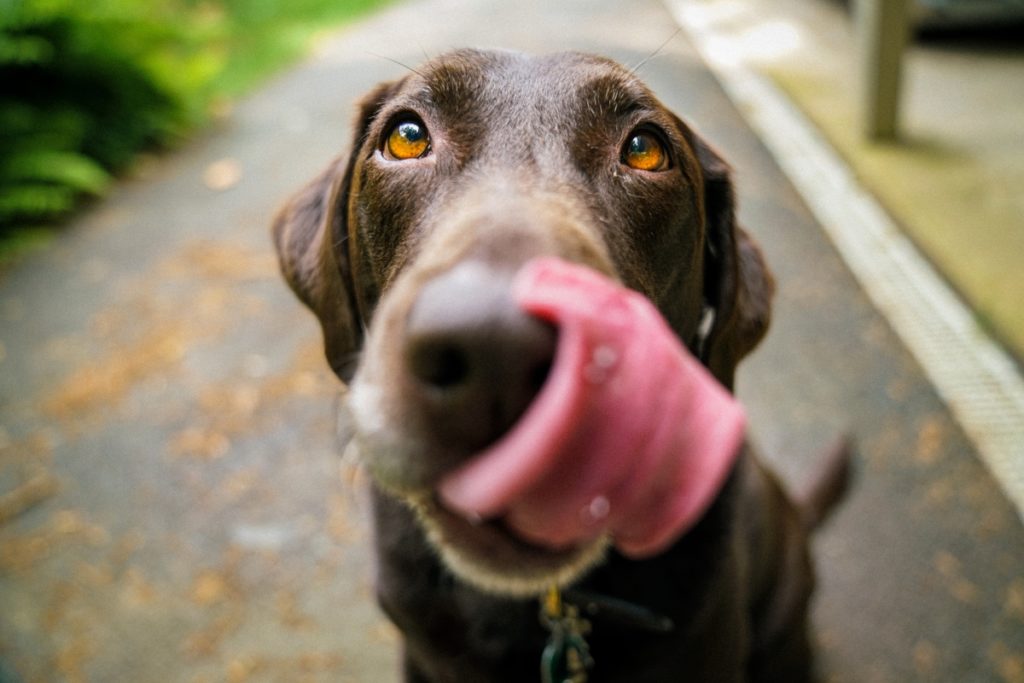All fields are required
Posted in Food Safety,Outbreaks & Recalls on August 12, 2018

There’s probably nothing more precious in life than the relationships we share, and this extends to our pets. Yet, our pets are susceptible to the same foodborne pathogens that humans are, and it is perhaps more important to practice food safety with your beloved pets as they are helpless to let us know that something is wrong.
Can Dogs and Cats Get Food Poisoning?
Yes, they can! We’ll focus on canines and felines here as they comprise the majority of US household pets, although those of us with birds, hamsters, snakes, reptiles, and even pigs as pets can fall ill with a foodborne illness. The reason cats and dogs are the subject of this focus is due to the fact that these animals largely consume processed, packaged foods that, much like the human farm-to-table process, are subject to contamination at every step. Additionally, many of us feed our pets “people food” because we just are so sucked in by those big, begging eyes. After all, if it’s good enough for us, then it’s certainly good for them! This is a fallacy: the same nasty bacteria and viruses can just as easily wreak havoc with a dog or cat’s digestive system. However, the instances of recalls with pet food products does not occur all that often, due to increased vigilance regarding their preparation and production. Additionally, there is the Reportable Food Registry, an early detection reporting system that permits immediate reporting of safety issues with food and animal feed, including pet food. Typically, when any pathogen such as Salmonella or E.Coli is detected in a pet food, a voluntary recall is issued, and the pet food is considered adulterated and unfit for consumption. In fact, the vast majority of pet food recalls has been voluntary and is not an indication that pet food is unsafe.
When a dog or cat has a foodborne illness, look for the following symptoms:
As a pet owner, you may be tempted to just assume that your pet “got into something”; however, if your pet’s symptoms don’t significantly improve within a couple of days, your pet needs to see the vet immediately. Foodborne illnesses in dogs and cats can quickly evolve into serious symptoms such as seizures, severe dehydration, muscle spasms, and disorientation.
Our pets can contract foodborne illnesses by eating spoiled food that is high in bacteria because of improper storage, eating food known to be poisonous such as chocolate, onions, and grapes, or eating food that is contaminated with a variety of pathogens such as salmonella, listeria, and even E.coli.
Much like humans, the vast majority of our four-legged pals will recover on their own nicely. Because human and canine bodies purge themselves of toxins in much the same way, your pet may experience quite the bout of vomiting and/or diarrhea. Make sure to provide your pet with plenty of water for a couple of days to prevent dehydration. Food poisoning in dogs can be more fatal due to dehydration.
How Does the FDA Regulate Pet Food?
The Food and Drug Administration (FDA) is responsible for the regulation of pet food, including canned or boxed food as well as treats. The FDA requires that all animal food “be safe to eat, produced under sanitary conditions, contain no harmful substances, and be truthfully labeled”. Additionally, pet food labeling is regulated by the requirement that these products are properly identified, net quantity statement, name and place of business of the manufacturer, and listing of all the ingredients in order from most to least.
Yes, You Can Get a Foodborne Illness from Pet Food
Another critical aspect of pet food safety is the real possibility of a pet owner contracting a foodborne illness via the improper handling of their pet’s food. As recently as January of 2018, two Minnesota children were sickened when they came in contact with turkey raw pet food that was contaminated with salmonella. One of the children became seriously ill with osteomyelitis, a bone condition that can occur as a complication of a salmonella infection.
Believing that raw, prepackaged pet food is a healthy alternative to packaged or canned pet food, many pet owners are now purchasing these products. Pathogens such as the aforementioned salmonella as well as listeria can be found in these raw foods. These bacteria are not exclusive to raw pet food: they can appear in dry pet food as well, especially salmonella.
Steps to Keep You and Your Pet Healthy
The CDC does not recommend serving your pet raw food because of the risk of bacterial contamination. But if you choose to do so, please follow these steps:
In addition, whenever you or a member of your household handles pet food, remember to:
By: Kerry Bazany, Contributing Writer (Non-Lawyer)
Notifications